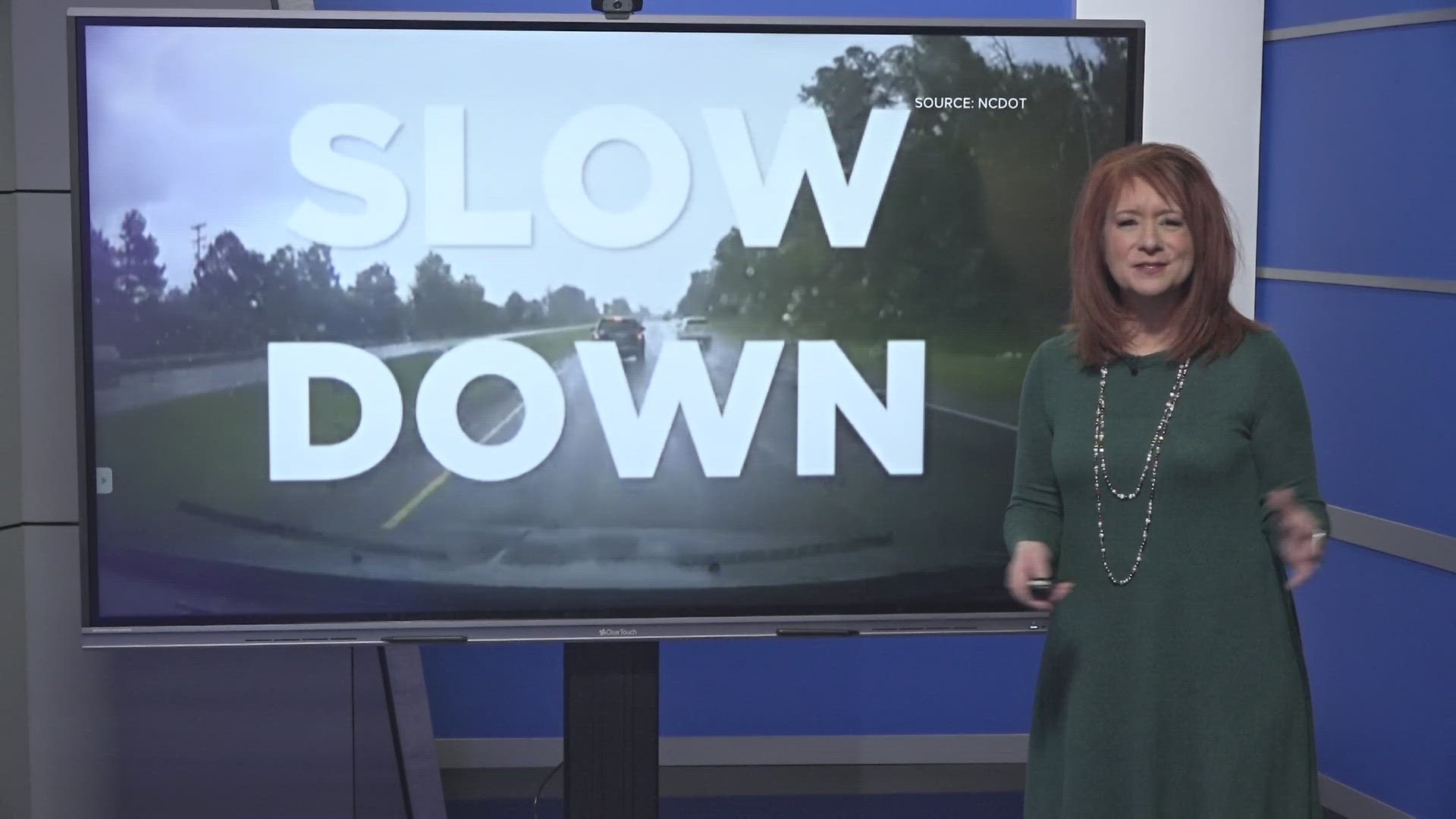GREENSBORO, N.C. — Slow down. You hear it all from safety experts all the time when it comes to driving in the rain. While your driving skills don't change, your vehicle's ability does.
According to AAA, with just a 1/12 inch of water on the road, your tires have to displace a gallon of water per second to keep the rubber meeting the road. At speeds as low as 35 miles an hour, new tires can still lose some contact with the roadway.
Don't use cruise control. Speaking of losing contact with the roadway, don't use cruise control when it's raining. You may think it's helping you regulate your speed, but it's doing the opposite.
"If you're on cruise control you lose all connection with your tires. Because the risk of hydroplaning is great, you want to maintain the feel, literally through your legs, of how well your tires are connected to the road. You need to feel that through the pedals," said Patrick Olsen, Carfax.
Hydroplaning. If you hit a big puddle and you start feeling that hydroplaning feeling, don't step on the brake, that can make it worse. What you want to do is let up on the gas. Not accelerating can help get you back in line.
Wipers on, headlights on. If your wipers are on, your headlights need to be on. It's a state law. While newer cars turn on the headlights automatically, the average age of a car on the road is 12.5 years old, which means plenty of drivers have to manually turn on their lights.
Hazard Lights. You should use them to alert other drivers if you're changing speed immediately on the interstate, but when you keep your hazards on all the time, you forgo your ability to use your blinker, therefore keeping other drivers guessing if you are changing lanes.
What is a safe driving distance? Just how close are you to the car in front of you? On a good day, you should be three to 4our seconds behind them. To track that, you can count. Use a fixed object like a light pole for example and when the car in front of you passes it, count how many seconds it takes you to get there.
On a rainy day, experts say you need to increase that time to five to eight seconds.
"You need more time, there are going to be large puddles of water that honestly, are very hard to see. there could be someone coming from the other direction who may hit a large puddle and all of a sudden you can't see anything out of your windshield," said Olsen.

